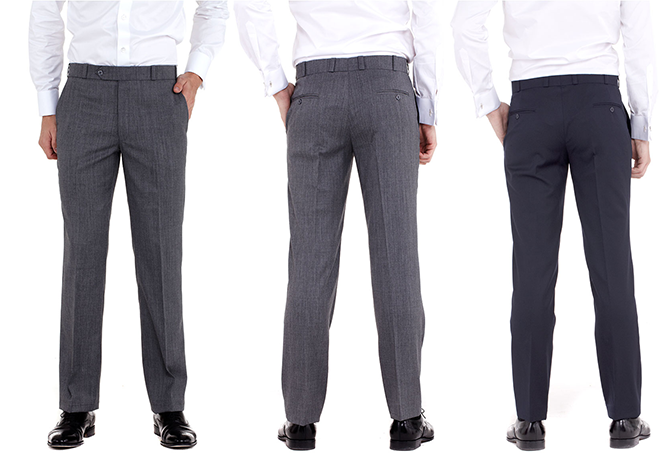Over the years, trousers for men’s suits have undergone a wide range of modifications in terms of cuts and style in accordance with the need and demand of the age.
The origin of trousers can be traced back to Iranian horsemen in the 15th century. Those early trousers looked more like the tights; a century later, Europeans started wearing “breeches” – basically, knee length men’s trousers. It was only after the French revolution that full length trousers (known as pantaloons) came into use, and then only among the working class. Pantaloons were introduced into England in the 19th century and were taken up as a fashion item for men, gradually evolving into the style we know today.
Men’s suit trousers should sit at your waist, not your hips. They should not be roomy in the crotch, but they should not be snug either. The legs should hang straight without any bulges – heavy-thighed men may need to have their trousers specially made. The trouser legs should rest on the tops of the shoes with a small break in the crease.
Styling differences in the trousers for men’s suits include:
- The cut – slim, straight or loose
- Cuffs or no cuffs
- Pleats – single, double or flat-fronted
- Side pockets – angled or vertical
